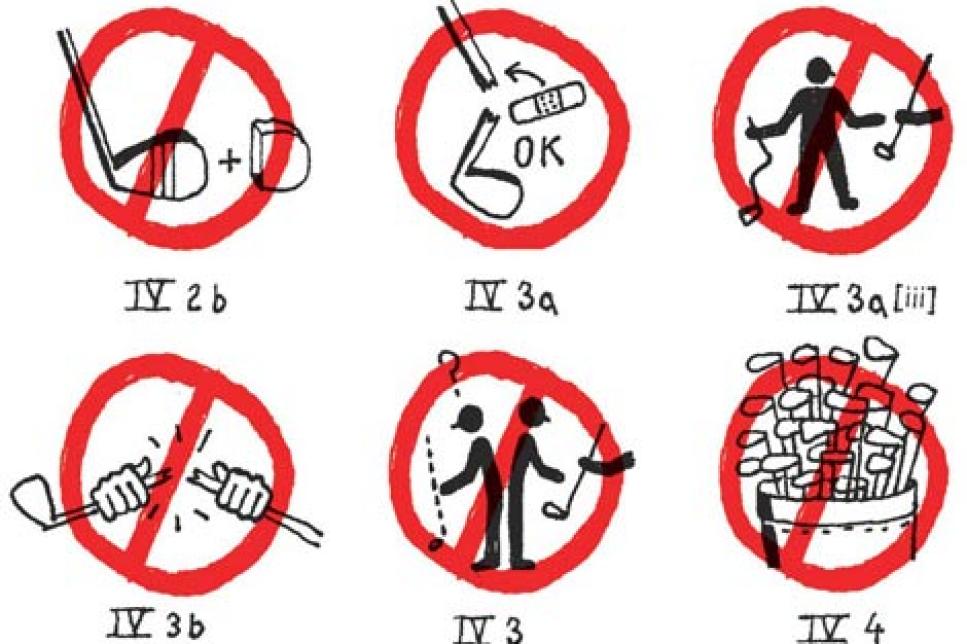Rule 4: Clubs

Although Rule 4-4 -- carrying a maximum of 14 clubs -- seldom has to be enforced, Ian Woosnam received a two-shot penalty during the 2001 British Open when his caddie left two drivers in his bag. This is just one of several important rules dealing with clubs that golfers should memorize. The others:
1. You can't alter the playing characteristics of your clubs during the round (4-2a) or apply anything to the clubface with the intent of changing your ball flight (4-2b).
2. If you accidentally damage a club during a round (includes damage caused by hitting a shot with it, dropping it, leaning on it, using it during a search or pulling it out of the bag), you can repair it, replace it or continue to use it (Rule 4-3a, Decision 4-3/1).
3. If you intentionally damage a club other than during the normal course of play, it can't be used or replaced (Rule 4-3b).
__4.__If you damage a club, you can't borrow someone else's on the course (Rule 4-3a[iii]).
__5.__If you began a round with 14 clubs, you can't replace one during the round (Decision 4-3/10).
6. If you have 14 clubs and find a lost club during a round, it's OK to keep it in your bag. Just don't use it (Decision 4-4a/8).
7. It's OK to put lead tape on a club, but not during a round. However, it's OK to replace lead tape during a round that has become detached during the normal course of play (Decisions 4-1/4, 4-2/0.5).
__8.__It's OK to carry a weighted training club during a round, but it has to be a conforming club and count as one of your 14 clubs (Decision 4-4a/7). 9. Wet grips cannot be replaced during a round (Decision 4-3/5).
You're about to hit a shot in the fairway, but as you look down and address your ball, you can see another player's ball in your peripheral vision. It's not in your line of play and doesn't interfere with your swing. Can you make the player move the ball before playing your shot? *For answer see below. *
Q: How often should you beat your handicap?
A: Not often. In fact, you should average about three shots higher than your handicap.
For example, if you have a course handicap of 16, and the Course Rating is 71.2, you should average 90, not 87. The USGA Handicap System is based on 96 percent of the best 10 differentials (corrected for Course and Slope ratings) of your last 20 rounds. More than half of your scores should be within three strokes of three over your handicap (87 to 93 in this example). Most golfers beat their handicap (86 or better in this example) only 20 percent of the time and beat it by three strokes one out of every 20 rounds.
For a person with a course handicap of 16 to break 80 (beat his handicap by eight strokes), the odds are 1,138 to 1. To do it twice, it would take the average golfer more than 700 years. In other words, it ain't happening.
ANSWER TO POP QUIZ: Yes, (Rule 22-2, Decision 22/1).